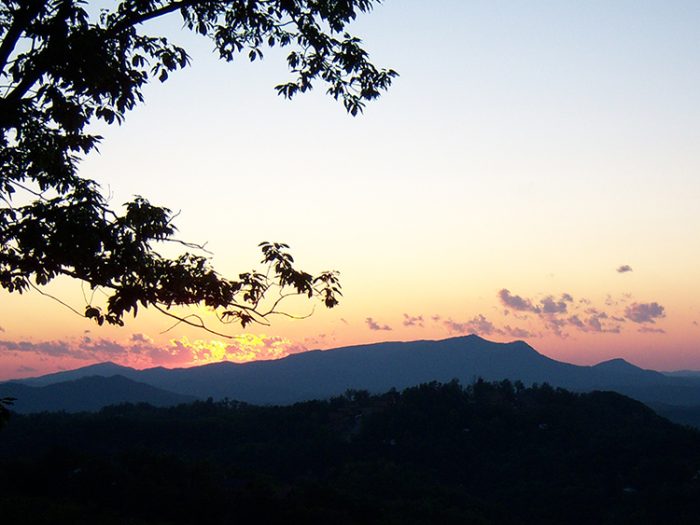 Ah, spring. Out of winter's long bleak nights come longer days, more sunshine, and a new colorful natural palette of flowers. In the Great Smoky Mountains, Mother Nature shows her sense of colorful botanical accessories with beautiful, delicate, and stunning Appalachian wildflowers.
Ah, spring. Out of winter's long bleak nights come longer days, more sunshine, and a new colorful natural palette of flowers. In the Great Smoky Mountains, Mother Nature shows her sense of colorful botanical accessories with beautiful, delicate, and stunning Appalachian wildflowers.
The stories behind these wildflowers are just as colorful as the blooms themselves. From how the plants reproduce to the folklore behind them, these wildflowers of the Appalachian trail bring a burst of color to the abundant greenery of the Smoky Mountains.
Vacationers to the Smokies can enjoy these wildflowers by taking hikes throughout the park anytime during the spring season. However, those visiting during April 21 to April 25 can enjoy the added advantage of enjoying the 65th Annual Spring Pilgrimage, which offers guided tours, seminars, and more.
If you're staying in the Smokies this spring, make sure to head to the Great Smoky Mountain National Park to enjoy some of the most common Appalachian wildflowers. Who knows? You might even see some of these around your Pigeon Forge cabin rental!
 Crested Dwarf Iris
Crested Dwarf Iris
Scientific Name: Iris cristata
Bloom Time: March - May
Many people are aware that the iris is Tennessee's state flower, but did you know that the hills of Tennessee also boast a variety of dwarf iris. The crested dwarf iris boasts the blue-purple petals above 3 unique petal-like sepals, which each feature a beautiful yellow crest.
You'll find these miniature beauties in the mid to low elevations of the park from March to May.
White Fringed Phacelia
Scientific Name: Phacelia fimbriata
Bloom Time: May - June
The white-fringed blossoms of this phacelia variety often spread over large patches of the forest floor, giving the appearance of springtime patches of snow along the ground. The flower itself boasts 5 petals which look like a cup-shaped wildflower which turn purple with age. One interesting fact about this flower is that, after blooming, these plants die leaving their seeds in the ground to grow during the next year, making them annuals.
You'll find this branching plant with one-sided, coiled clusters of light blue, lavender, or white flowers with deeply fringed petals in mid to high elevations of the park.
Dutchman's Britches
Scientific Name: Dicentra cucullaria
Bloom Time: April - May
It's no secret where these plants get their name from. Dutchman's Britches boast the appearance of a pair of pantaloons hanging on the line to dry. The white, nodding flower on a leafless stalk that hangs over the plant's dissected leaves. Do not confuse this plant with squirrel corn, which blooms around the same time and and in similar areas. You can find Dutchman's Britches across various different elevations throughout the park.
One of the most interesting facts about Dutchman's Britches is that its seeds are spread by ants though a process called myrmechochory. The plant's flesh organ called an elaisome attracts ants. The ants take seeds to the nest where they eat the elaisomes, planting seeds in their nest debris where they are protected until they germinate and reap the added benefits of the nutrients of the debris.
Warning: All parts of this plant are toxic (in large quantities). The plant causes minor skin irritation when touched, lasting only for a few minutes. When ingested the plant causes trembling, staggering, vomiting, diarrhea, convulsions, labored breathing. (Summary: Look, don't touch).
 Spring Beauty
Spring Beauty
Scientific Name: Claytonia virginica
Bloom Time: Jan - May
Spring Beauty is one of the earliest spring wildflowers to arrive in the park. This flower's beautiful 5 pink-striped petals come in shades of white or pale pink. Though the plant is only 3 to 4 inches tall, it offers a lot of beauty. You can also identify this plant by it's pair of oval, dark green leaves halfway up the stem. You can find Spring Beauty across a wide range of locations and elevations of the park.
Peak flowering occurs between March and May depending on part of its range and weather.The flowers are 0.7–1.4 cm diameter with five pale pink or white petals, and reflect UV light.
Additionally, the plant itself grows from an underground potato-like tuber. Many Native Americans and early settlers used them for food and those interested in edible wild plants still enjoy the sweet, chestnut-like flavor.
Vasey's Trillium
Scientific Name: Trillium vaseyi
Bloom Time: April - June
The deep red flower of Vasey's Trillium is the largest of the trillium varieties of Appalachian wildflowers. It is the latest blooming trillium and can be found in mid to low elevations of the park. The red flower features three leaves, three sepals and three petals. "Sweet Wakerobin" is another name for these trillium blooms.
Trout-Lily
Scientific Name: Erythronium umbilicatum
Bloom Time: Early March
With leaves that look brook trout with spots or blotches, the Cherokee Indians believed that when the trout lily bloomed it was time to fish. At 6 to 8 inches tall, the trout lily boasts a yellow, solitary drooping flower. You can find this flower in several different locations and elevations.
The Cherokee aren't the only ones who had mythology about this flower. Christian mythology holds that the lily sprang from the tears of Eve when she found out motherhood was near.
Trout-lily also has held several medicinal purposes. Native American women used the plant as temporary birth control in the spring to avoid labor in the most frigid part of winter.
Fire Pink
Scientific Name: Silene virginica
Bloom Time: April - August
This bright red flower is not called "pink" for the color but because of the notched tip. Fire pink is a spring wildflower that boasts a red flower with 5 petals on a slender stem with a pair of slender, opposites leaves. You can find this flower throughout the park in several location an elevations. This flower is also called "Catchfly" because of its sticky hairs, which trap insects.
Pink Lady's-Slipper
Scientific Name:Cyripedium pubescens
Bloom Time: April - July
A member of the orchid family, the pink lady's slipper is one of the most unique of spring wildflowers. The blossom has a pink inflated pouch and two large basal ribbed leaves that are somewhat hairy. This is the only lady's-slipper brand without leaves on the stalk (There are also yellow lady's slippers in the Great Smoky Mountains National Park).
Orchids are the result of symbiotic relationship between the plant and fungus of the Rhizoctonia genus. Generally speaking, orchid seeds don't have food supplies in their seeds like most other plants. Pink lady's slipper seeds require threads from the fungus to break open the seed and subsequently pass on nutrients to the seed. Later on, when the plat is older, the pink lady's slipper plant will produce its own nutrients which the fungus will extract from the orchid roots.
The life cycle of a pink lady's slipper is long and it can take up to 5 years for the plants to bloom!
Final Thoughts on Appalachian Wildflowers:
These are just a few highlights of the over 1,500 flowering plants that call the Great Smoky Mountain National Park. So, head out on the trail with your wildflower guidebook and a sense of adventure to discover some of the most fascinating floral finds in the park.
Written by Brittany Tipton








